By far the most popular single-board computer around, the Raspberry Pi is known for its extensive software ecosystem and community. You can take the power of your Raspberry Pi to the next level by connecting several boards together in a cluster. A cluster is a set of two or more Raspberry Pis that communicate and work together on a local network to perform complex computational tasks.
Creating your own cluster opens the door for some cool new projects, such as a low-scale web server, home media server, backup and storage server, and more. However, creating a cluster isn’t a straightforward task, and it requires technical knowledge and patience to organize everything properly and avoid a tangle of cables and wires. Giving your cluster a case is an ideal way to minimize the potential mess and add some style to your workspace.
In this article, we’ve put together a list of some of the best Raspberry Pi cluster cases around, including a mix of both DIY and purchasable options. Take a look and see which case is best for your specific project!
To DIY
Compact
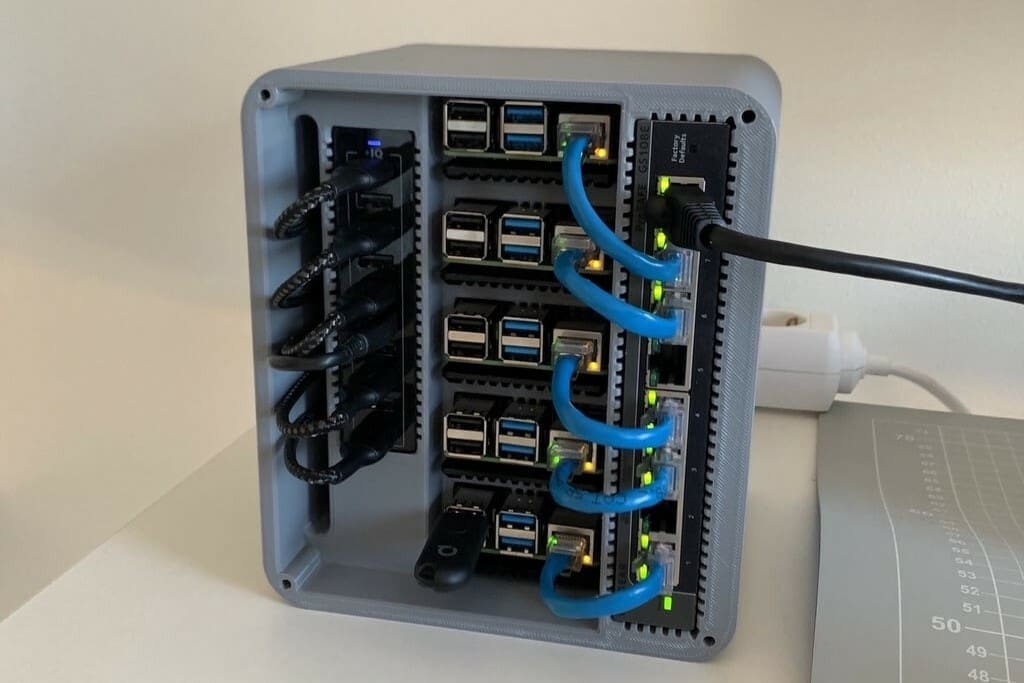
Want to save space with a simple and practical design? This is the right 3D printable cluster case for you! With just a few screws and some filament, you can quickly have a beautiful structure for your cluster.
Despite its compact size, this case features two 80-mm fans to pull air through the boards and keep them cool. The designer recommends printing with only 10% infill, but you can try reinforcing the structure a bit more by increasing the perimeter thickness. This case was designed for the Raspberry Pi 4, and you find a complete list of components on the Thingiverse page.
- Who designed it? JakobPetersson
- Where to find it? Thingiverse
- Number of slots: 5
- Components: 3D printed parts, 5x aluminum heatsink cases, USB cables, network cables, 10-port desktop charger, 2x 80-mm fans, and screws
Fully Enclosed
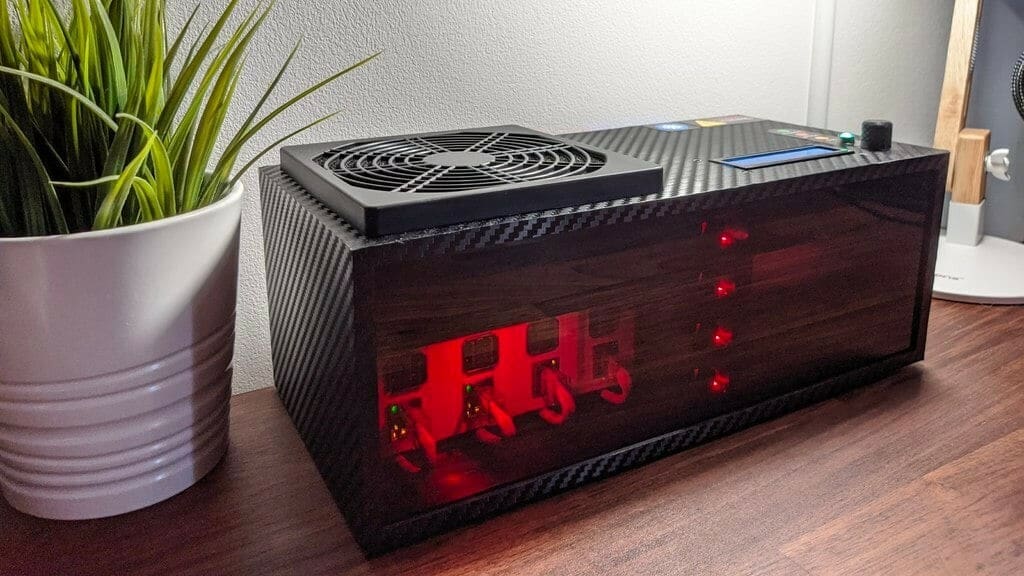
If you appreciate gamer-style computer cases, this next case is an excellent option to consider. Fully enclosed with an acrylic panel, you’ll keep your components safe from dust.
The creator designed this case for 3D printing, so it should be fairly simple to print. There are files available for the different parts of the case, so you don’t need to worry about your build plate being too small. For the finish, the author used vinyl film with a carbon fiber effect, creating a beautiful look without the need for painting or extensive post-processing work. The case is compatible with the Raspberry Pi 3B, 3B+, and 4.
- Who designed it? Whitei
- Where to find it? Thingiverse
- Number of slots: 4
- Components: 3D printed parts, step down converters, LCD I2C display, rotary encoder, LED panel mount, LED, Ethernet panel mount, GX16 aviation connector, DC jack panel mount, 120-mm fan, Ethernet patch cables, A4 sheet of acrylic, fan dust filter, and LED breakout
Dust Proof
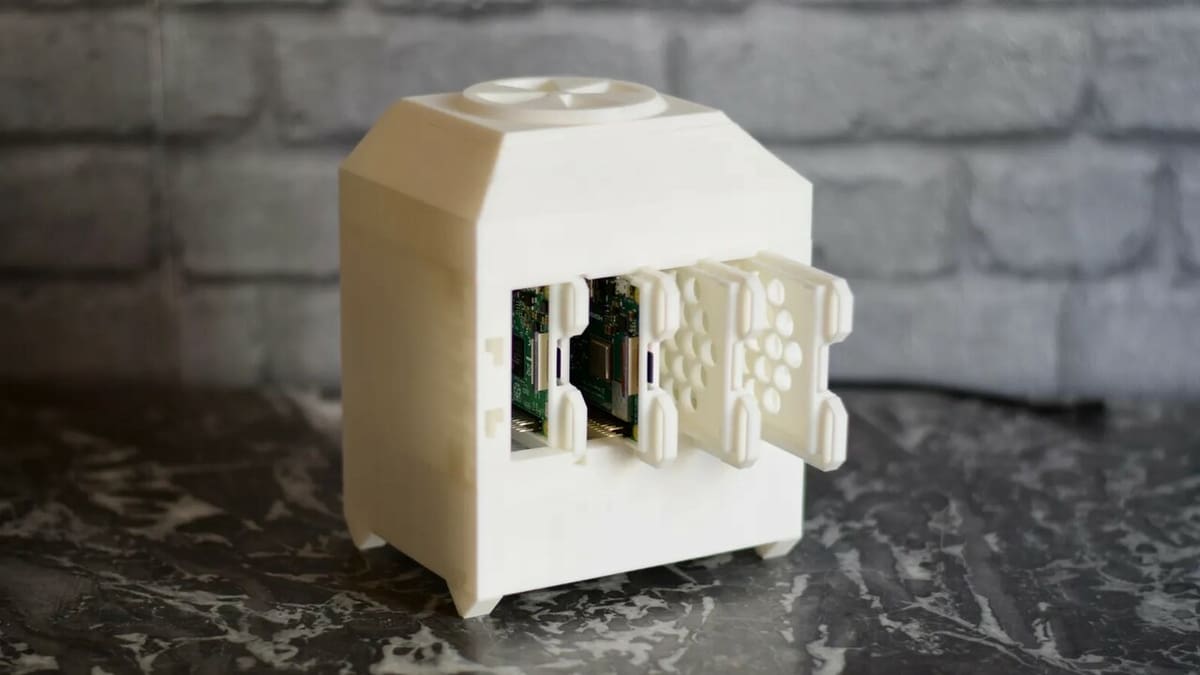
Often, keeping your equipment well-protected, ventilated, and organized is what really matters, and although some wires and parts may be on the outside, the essentials are kept well-covered in this cluster case. With a 3D printer, some filament, and a few other parts, you’ll soon have everything in order.
The ventilation system uses a 92-mm cooler, but the author mentions that they intend to provide other sizes in the future, and there’s the possibility of adapting it for different sizes. The upper air outlet also has an airflow adjustment to regulate what’s most suitable for your case. Here, the switch is mounted separately from the case. The Raspberry Pi racks are compatible with the Raspberry Pi 2B, 3B, 3B+, and 4.
- Who designed it? EgonHeuson
- Where to find it? Printables
- Number of slots: 4
- Components: 3D printed parts, 92-mm fans, USB cable, 2x Micro-USB cables
Water Cooled
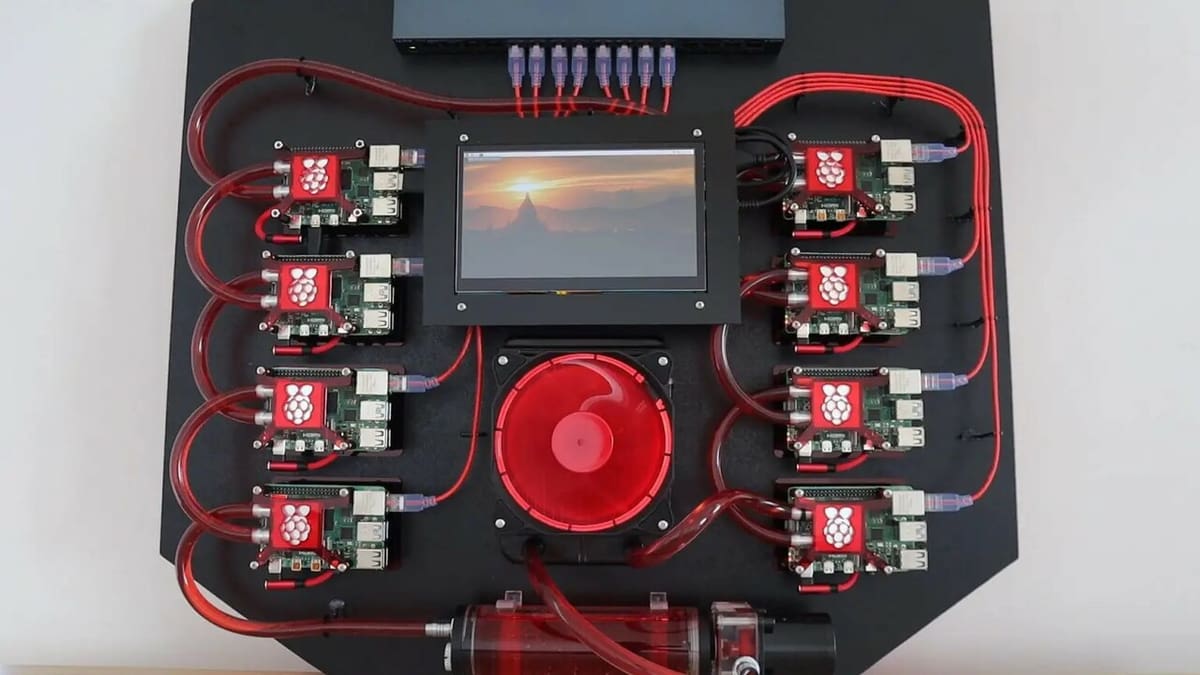
So, you’ve decided to set up a cluster but have no extra space? Maybe the solution is to mount it on a wall with this functional and eye-catching case! One of the most obvious reasons for building a cluster is to increase processing capacity. However, things can heat up a bit more when you have more Raspberry Pis, so good liquid cooling can be a useful feature for your cluster.
This cluster is cooled by a 120-mm fan, which the creator decided to place in the center of the design, with four Raspberry Pi 4s on either side of the radiators. The cooling block brackets were made from laser-cut acrylic to provide a stylish, gamer-like finish, and an LED strip was also added to illuminate the wall around the panel. The entire system costs around $85 to complete, which is a bit less than some other comparable cooling solutions.
- Who designed it? Michael Klements
- Where to find it? The DIY Life
- Number of slots: 8
- Additional components: Laser-cut acrylic brackets, power USB charging hub, HD touchscreen monitor, water cooling blocks, Ethernet patch leads, USB cables, RGB LED strip, M3 standoff mount kit, M3 screw kit, 3-mm MDF board measuring 600 x 600 mm, water cooler kit, and some supports for the blocks
To Buy
Utronics Complete Enclosure
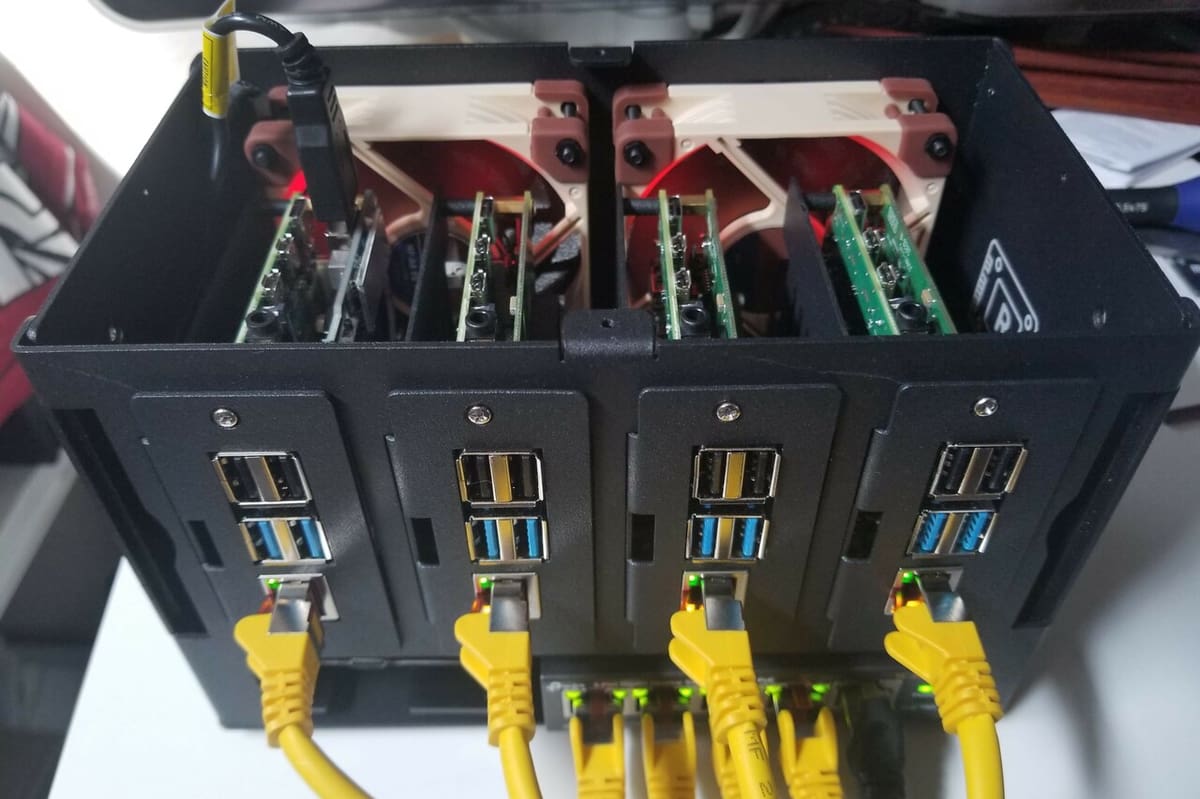
A sturdy metal-framed case may be just what you’re looking for to keep everything well protected. Similar to a desktop computer case, this option gives you bays and slots to comfortably assemble your Raspberry Pi cluster in a case designed for clustering.
The case offers a spacious interior that allows you to accommodate both the Raspberry Pi and a 2.5-inch SSD drive in each of the four removable slots, along with ample space for a switch. It also includes two quiet 80-mm fans to improve heat dissipation and has the overall dimensions of 162 x 206 x 136 mm, and for a price of ~$70, it’s everything you may be looking for.
- Where to find it? Amazon
- Number of slots: 4
- Components: The kit comes with metal parts, 2x cooling fans, mounting brackets, foot pads, and screw accessories, although, as mentioned by reviews, an adapter for powering the fans is needed, while an external Ethernet cable and a power cord (for the PoE switch) might be needed depending on the setup
GeeekPi Stackable
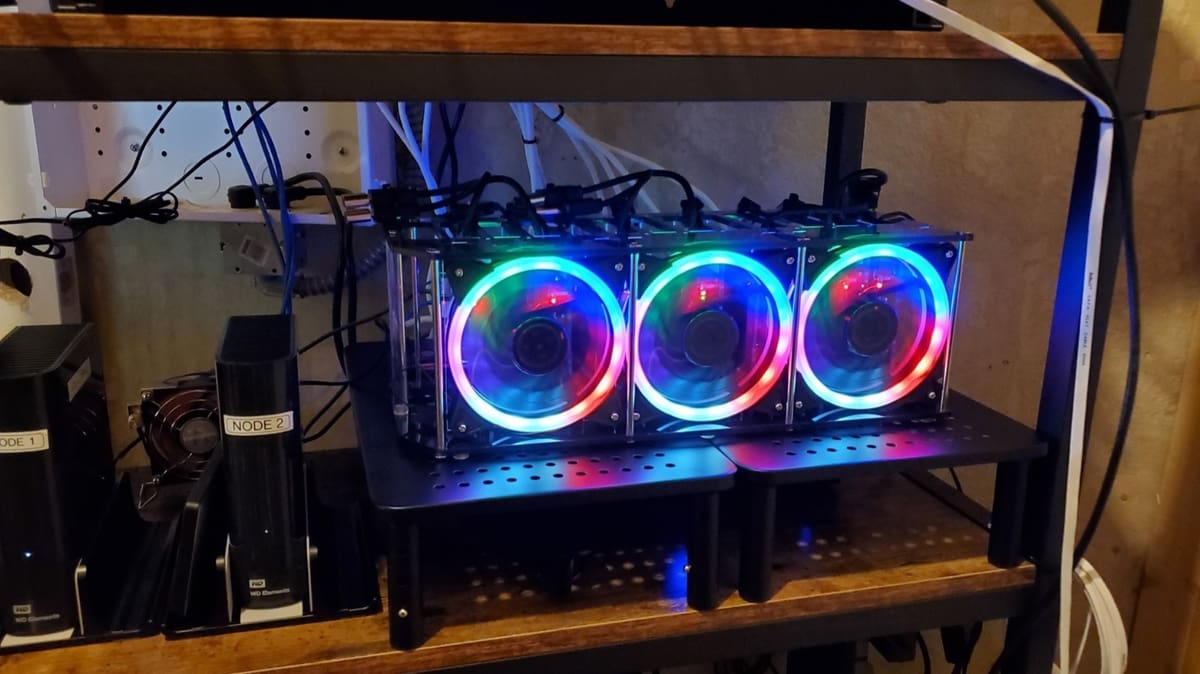
Here’s an option that strongly resembles a gaming computer tower, with acrylic panels and up to three 120-mm fans. This is visually appealing and also quick and easy to assemble, offering ample space for up to 12 boards or slots vertically.
While the model for 12 boards costs around $70, there are two smaller versions for 8 and 4 slots that use the same standard with 120 mm fans, so you can choose the best configuration for your needs. Each slot has openings on three different sides, facilitating ventilation and access for connecting components and other items. However, there’s no space for the switch.
- Where to find it? Amazon
- Number of slots: 12
- Components: The kit comes with metal parts, support plates, and cooling fans
Cloudlet 8-Slot
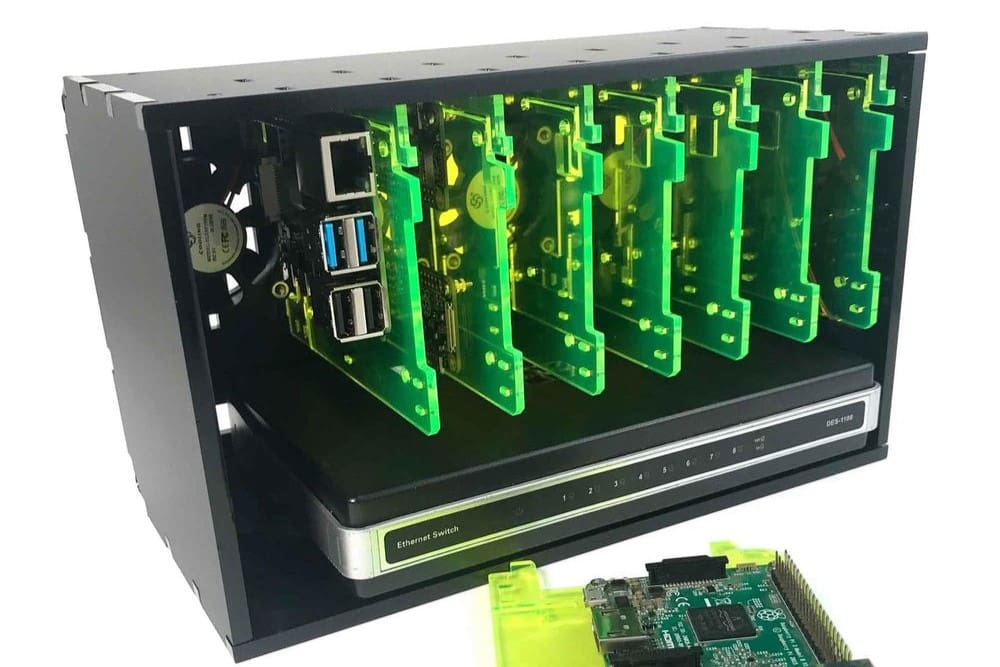
This is a C4Labs case with the capacity for up to eight boards and a network switch, and the entire case is modular, meaning you can stack them on top of each other to increase your cluster’s capacity. It’s possible to use HATs, but they will occupy the additional space next to each board. The kit costs around $55, and the colors are customizable.
Usually, relatively thin sheets are used for assembling cases of this kind, but this case uses thick and durable 1/4-inch acrylic. There are multiple color and finish variations available.
- Where to find it? Pi Hut
- Number of slots: 8
- Components: The kit comes with the main case shell, support plates, 4x fans, screws, and Velcro pads, but you’ll also need additional components, like a network switch
Pi Hut Modular
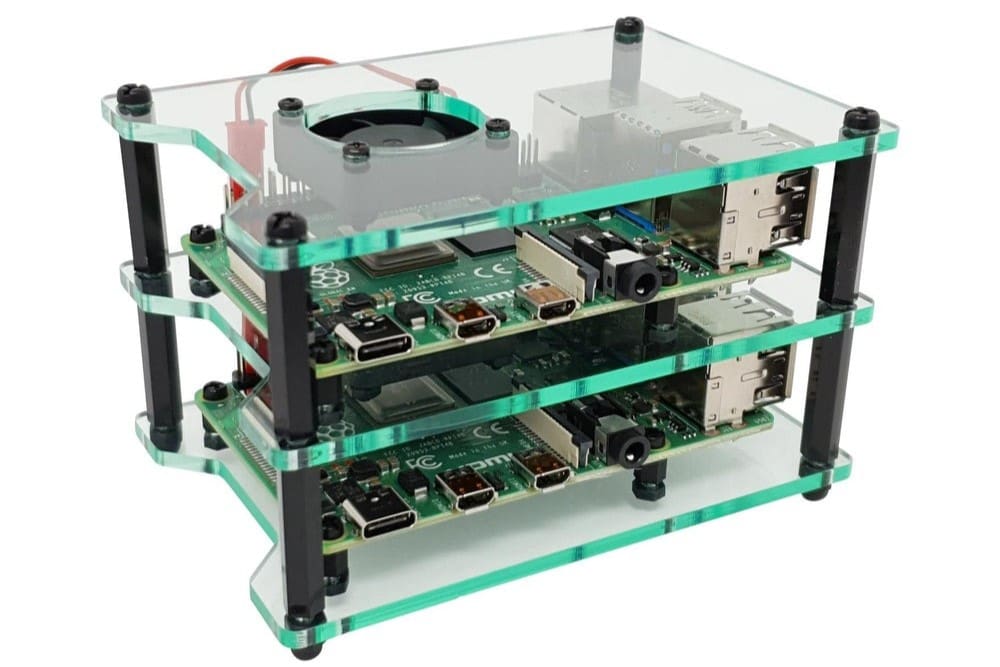
Among all of the options on our list, this one is by far the most popular, perhaps due to its simplicity and the flexibility it provides to stack as many Raspberry Pi boards as needed, not to mention the low price. It costs around $9 on average for a kit with two boards. This case only accommodates the boards, but that’s still quite helpful.
The acrylic provides a great aesthetic finish, and the cable issue can be resolved with cable organizers and a little bit of imagination, as all the ports are easily accessible. The vertical stacking structure also helps save space, but depending on the number of boards you stack, it may be a good idea to securely fasten the base.
- Where to find it? Pi Hut
- Number of slots: Stackable design
- Components: The kit comes with acrylic plates, standoffs, fixings, and 2x 5-v fans
License: The text of "Raspberry Pi Cluster Case: The Best Options" by All3DP is licensed under a Creative Commons Attribution 4.0 International License.
